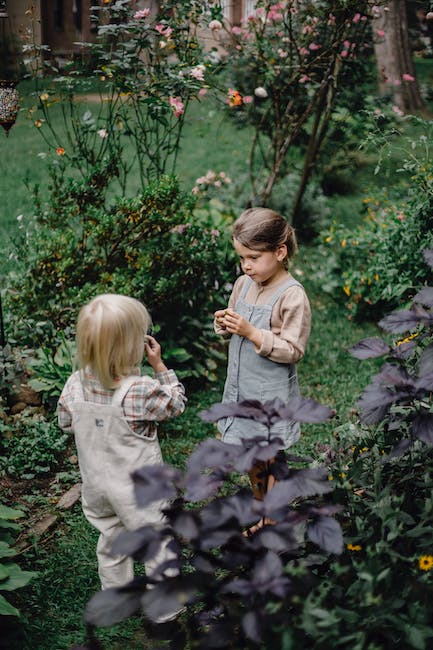When embarking on the journey of creating a garden, the first and perhaps most crucial step is selecting the right location. You need to consider various factors that will influence the success of your garden. Start by assessing the amount of sunlight the area receives throughout the day.
Most plants thrive in full sun, which typically means at least six hours of direct sunlight. If your chosen spot is shaded by trees or buildings, you may need to adjust your plant selection accordingly. Observing the site at different times of the day can provide valuable insights into how light patterns shift, helping you make informed decisions.
Additionally, think about the accessibility of your chosen location. You want to ensure that it is easy for you and others to reach the garden for maintenance and enjoyment. Consider proximity to water sources, as plants will require regular watering, especially during dry spells.
If you plan to involve community members or family in your gardening efforts, a location that is easily accessible will encourage participation and foster a sense of ownership among those involved. Lastly, take into account the soil quality and drainage in your selected area. Conducting a simple soil test can reveal its pH level and nutrient content, allowing you to amend it as necessary for optimal plant growth.
Key Takeaways
- Choose a location with ample sunlight and access to water for a successful garden
- Plan the layout of the garden to maximize space and create a visually appealing design
- Select plants that are well-suited to the local climate and soil conditions for a thriving garden
- Implement sustainable practices such as composting and water conservation to minimize environmental impact
- Create gathering spaces within the garden to encourage community interaction and enjoyment
Planning the Layout
Assessing Your Garden’s Potential
Consider the size and shape, as well as existing features like trees, pathways, or fences that may influence your layout. A well-thought-out layout enhances both aesthetics and functionality. As you plan, think about how to organize your plants.
Organizing Your Plants
You might choose to group plants by type—herbs, vegetables, and flowers—or arrange them based on their height and growth habits. Taller plants can provide shade for shorter ones, creating a microclimate that benefits all.
Pathways for Easy Access
Additionally, consider incorporating pathways that allow easy access to different areas of the garden without trampling on delicate plants. These pathways can be made from various materials such as gravel, wood chips, or stepping stones, adding both practicality and visual interest to your design.
Selecting the Right Plants
With a layout in mind, it’s time to dive into the exciting world of plant selection. The choices you make here will significantly impact the overall success and enjoyment of your garden. Start by considering your climate zone and the specific conditions of your garden site.
Some plants thrive in hot, dry conditions, while others prefer cooler, moist environments. Researching native plants can be particularly beneficial, as they are often well-adapted to local conditions and require less maintenance. In addition to climate considerations, think about what you want from your garden.
Are you looking to grow vegetables for your kitchen? Perhaps you want a vibrant flower garden to attract pollinators? Make a list of your priorities and preferences before heading to the nursery or garden center.
Don’t forget to consider seasonal interest; selecting a variety of plants that bloom at different times can ensure that your garden remains visually appealing throughout the year. Mixing perennials with annuals can also provide a dynamic display while allowing for easy changes in future seasons.
Implementing Sustainable Practices
As you embark on your gardening adventure, it’s essential to incorporate sustainable practices that benefit both your garden and the environment. Start by considering organic gardening methods that avoid synthetic pesticides and fertilizers. Instead, focus on building healthy soil through composting and natural amendments like manure or bone meal.
Healthy soil not only supports plant growth but also helps retain moisture and reduces the need for frequent watering. Water conservation is another critical aspect of sustainable gardening. Implementing drip irrigation systems or rainwater harvesting techniques can significantly reduce water usage while ensuring that your plants receive adequate hydration.
Mulching around plants can also help retain moisture in the soil and suppress weeds, further enhancing sustainability efforts. Additionally, consider planting a diverse range of species to promote biodiversity within your garden ecosystem. This diversity can help control pests naturally and create a balanced environment that supports various forms of wildlife.
Creating Gathering Spaces
A garden is not just a collection of plants; it’s also a space for connection and community. As you design your garden layout, think about how you can create gathering spaces that invite people to come together and enjoy the beauty of nature. Consider incorporating seating areas where friends and family can relax, chat, or enjoy a meal outdoors.
Benches, picnic tables, or even simple chairs can transform your garden into a welcoming retreat. In addition to seating, think about how you can enhance these gathering spaces with features like fire pits or outdoor kitchens for cooking and entertaining. These elements can encourage social interaction and make your garden a focal point for gatherings throughout the year.
You might also consider adding decorative touches such as sculptures or water features that create a serene atmosphere while providing visual interest. By designing spaces that foster connection, you’ll cultivate not only a beautiful garden but also lasting memories with those who share it with you.
Engaging the Community
One of the most rewarding aspects of gardening is the opportunity to engage with your community. Whether you’re starting a community garden or simply inviting neighbors to participate in your personal project, fostering connections can enrich everyone’s experience. Begin by reaching out to local gardening clubs or community organizations that may be interested in collaborating on gardening initiatives.
Hosting workshops or events can also be an excellent way to share knowledge and inspire others to get involved. Consider creating volunteer days where community members can come together to help with planting, weeding, or harvesting. These events not only lighten your workload but also build camaraderie among participants.
You might even establish a mentorship program where experienced gardeners can guide novices through their gardening journey. By actively engaging with your community, you’ll create a sense of belonging and shared purpose that enhances the overall gardening experience for everyone involved.
Maintaining the Garden
Once your garden is established, ongoing maintenance becomes essential for its health and longevity. Regular tasks such as watering, weeding, pruning, and fertilizing will ensure that your plants thrive throughout the growing season. Create a maintenance schedule that outlines when specific tasks should be completed; this will help you stay organized and prevent any essential chores from falling by the wayside.
Pay attention to signs of pests or diseases in your plants; early detection is key to preventing larger issues down the line. Implementing integrated pest management strategies can help control pests while minimizing harm to beneficial insects and the environment. Additionally, don’t forget about seasonal tasks such as preparing your garden for winter or planning for spring planting during the colder months.
By staying proactive in your maintenance efforts, you’ll cultivate a vibrant garden that continues to flourish year after year.
Evaluating and Adapting
As each growing season comes to an end, take time to evaluate what worked well in your garden and what could be improved upon for next year. Reflecting on your successes and challenges will provide valuable insights that inform future gardening endeavors. Consider keeping a gardening journal where you document plant performance, weather conditions, and any changes made throughout the season; this record will serve as a helpful reference for years to come.
Be open to adapting your approach based on what you learn from each season’s experiences. Perhaps certain plants thrived while others struggled; use this information to adjust your plant selections or layout for future seasons. Gardening is an ongoing learning process, and embracing change will allow you to continually enhance your skills and create an even more beautiful space over time.
By evaluating and adapting regularly, you’ll ensure that your garden remains a source of joy and inspiration for years ahead.
If you’re interested in community garden design, you may also want to check out the article “Sow Fresh: The Magic of Organic Garden Spray”. This article discusses the benefits of using organic garden spray to maintain a healthy and thriving garden. By incorporating natural and sustainable practices into your community garden design, you can create a beautiful and productive space for everyone to enjoy.




